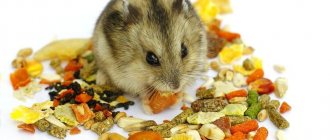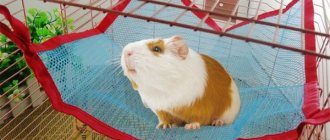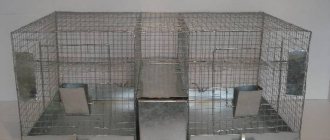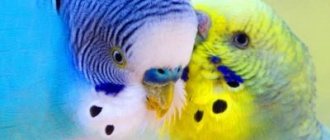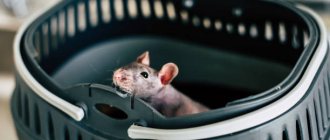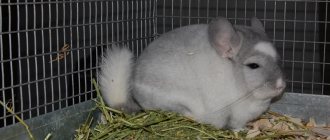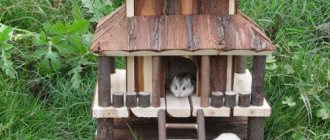Types of perches
Perches (perches, perches) are varied.
| Perches for parrots | ||
| Artificial | pros | Flaws |
| Plastic | They are easy to wash and clean, so they are recommended when the parrot is sick, when complete disinfection is required. | • Cannot be used daily. • Parasites grow in cavities. • Provoke the formation of calluses. |
| Rubber | • Change shape if necessary. • Suitable for walking areas. | The dye and other chemical components in the composition may pose a threat to the health of the feathered pet. |
| Braided from cotton threads on top and with wire inside | • Decorate the interior. • Made from natural cotton material. | There is a risk that the parrot may clog the crop with threads or become entangled in them. |
| Perch nozzles with sand spraying | • Option for grinding claws. | • Paw skin irritations • Calluses |
| Concrete or cement perches | • Grinding of claws and beak. • Additional additive. | • Cold (there is a risk of freezing feet). • The goiter may become clogged. |
| Additives made of pumice (volcanic stone) | • Only for grinding beak and claws | • Not suitable for sitting. |
| Made or sprinkled with small mineral stones | • Grinding claws and beak. • Additional mineral feeding. • Additional additive. | • Mineral perches are not used for prolonged sitting. |
| Heated perches | • Used for outdoor enclosures and outdoor walking areas. | If a bird pecks at the wire used for heating, it may die from an electric shock. |
| Natural | pros | Flaws |
| From tree branches (selected independently) | An ideal option that provides maximum comfort and recreates the natural environment. | No |
| Wooden perches - factory-made (store-bought version) | If the diameter is selected correctly, they are well suited for birds. | • Requires improvement - it is necessary to scrape out nicks and grooves on the perfectly smooth surface of the branches, otherwise the bird will feel pressure on the limbs. • They do not have bark, which helps to wear down the beak. |
We prepare the material
There are certain rules for preparing twigs for parrot perches.
Where and how?
- We go to the forest for suitable materials. It is necessary to do this away from roads, landfills, and industrial enterprises.
- You shouldn’t take risks with “dacha” branches either: what if the trees were sprayed for pests?
- carefully for any parasites or rot on the branches.
- Fresh branches should also not be used immediately as perches: the raw materials are first thoroughly washed with a brush with warm water, then doused with boiling water and dried.
There is no need to remove the bark from the branches: the parrot, gnawing on them, will grind off its beak, at the same time “refueling” with a certain vitamin and mineral dose.
It is recommended to make perches from different wood species, since all trees and shrubs have different hardness and porosity. Over time, you can determine which tree perch your pet likes to chew on the most, and pamper him with his favorite type of wood.
It is recommended to place the shoots cut in autumn in a vessel with clean water and wait until the buds swell, and then use the twig as a perch. Such a perch will serve the parrot as an additional and healthy treat, as it will contain many vitamins, fiber and microelements.
Length and thickness
Pets will love perches of different diameters.
The perches should be equal to the length and width of the cage plus 5–7 mm - they should protrude slightly beyond the boundaries of the parrot’s home. As for the diameter, the most convenient perch thickness for wavy birds is no less than 1.5 cm. If the perch is thinner, it will create excessive stress on the bird’s legs. The parrot's fingers should rest on the perch, not hang under it, and its claws should touch the perch.
To prevent the legs from getting too tired while in one position, it is recommended to place perches of different thicknesses in the bird’s home. If there are perches of different thicknesses in the cage, the parrot will choose the one that suits him best at the moment.
It’s good if the diameter along the entire length of one additive is not the same. In this way, “corns” on the bird’s feet can be avoided, since the pressure on the same places will be reduced.
Installing the perch step by step
We've sorted out the material for making the additive.
- Tools needed: knife, fine-toothed hacksaw, tape measure, garden pruner.
- The cage is measured in accordance with the intended location of the perch - along the length or width of the home.
- The branch is cut slightly longer than the established size.
- A small cut is made at the end of the branch.
- The same cut is made on the other side.
If the attachment will be attached at the junction of the rods, then the cuts are made cross-shaped.
- The poles are installed in their designated place.
Why do parrots need perches in a cage?
The poles perform a number of functions necessary for the normal functioning of parrots:
- Act as an overnight stay.
- They are part of the daytime pastime.
- They help to grind down the claws and beak.
- They help birds develop their paw muscles.
For each type of parrot, the types of poles are selected individually.
It all depends on the following aspects:
- number of birds in the cage;
- the size of the bird (the diameter of the perch should be such that the parrot can clasp it well with its toes, and the bird does not experience any discomfort).
Should I buy a ready-made gaming complex?
Pet stores sell generic playgrounds. For the most part, they are made of smooth wooden slats and equipped with standard accessories.
Advantages of a ready-made stand for games:
- Natural materials that are safe for birds were used in production;
- factory parts have straight cuts and smooth surfaces;
- elegant fasteners and fittings are used;
- the ability to choose a suitable design based on size and installation method.
Flaws:
- overly smooth, ostentatious appearance;
- sanded slats are too slippery, and this is harmful to the bird’s feet;
- monotonous modules;
- flimsy assembly, weak connections.
Purchased gaming stand
You can buy a gaming stand ready-made or assemble it from individual modules according to your preferences. Manufacturers of equipment for birds and animals offer various products, all that remains is to make a choice. If none of the complexes suits you, order a model based on an individual sketch. If you have the skills and appropriate tools, you can create a stand yourself and equip it with elements that will not break due to intense games.
Correct placement of perches in the cage
Perches are placed based on the following rules:
- For 1 bird you will need 2-3 pieces.
- The bird's paw should wrap 75% around the pole.
- Perches should not interfere with free movement.
- They are not mounted exactly on top of each other, so as not to get dirty with droppings.
- They are located at different levels (one for sleeping higher - the parrot should not touch the ceiling with its head, and others lower - so as not to touch the bottom with its tail).
- For frequent walking, some of the poles are attached from the outside of the cage - on the roof or on the side wall.
- When several feathered pets live, their perches are placed taking into account that the birds do not touch each other.
Try changing the position of the poles sometimes. In most cases, parrots like such changes and sometimes even cause delight. As an option, hang the poles separately in the room, make a stand out of them, a swing in a cage, or a kind of toy.
Artificial friend
Parrots are very sociable creatures. If you have only one bird, then she definitely needs an object with which she can “talk”. It can be a mask or a toy parrot, which is easy to find in any pet store. They can be made of various materials (plastic, wood, etc.) and have a variety of sizes. When purchasing a wooden “friend,” make sure that the parrot’s wood is not painted with varnish or any other similar product. If you take a plastic bird, check if there are any traces of glue left on the toy.
If you have certain skills in needlework, then you can sew such a toy yourself. This craft will be environmentally friendly and will definitely not harm your pet.
Which poles should not be used?
For constant pastime, it is strictly forbidden to use the following types of poles:
- Made of plastic;
- From pumice;
- Flexible rubber;
- Threaded cotton;
- Made of concrete.
The use of the above perches is permissible only as a temporary accessory during disinfection or as an additional seating area in places where birds rarely visit.
The wooden options that are offered in the store are used only after additional processing (notching), since they have a smooth, even surface that is not suitable for birds.
Multi-colored budgies
It is also unacceptable to use additives made from prohibited tree branches or store-bought versions of questionable production with damaged packaging.
Branches lying on roadsides or in landfills should not be used. It is also prohibited to cut branches from trees that have been sprayed with chemicals. In both cases, neglecting this recommendation poses a threat to the health of the bird.
Selection Criteria
When choosing a cage for a budgie, special attention should be paid to the distance between the fencing rods. If the parrot can squeeze its head between them, the risk of serious injury increases. Therefore, the cage must be selected taking into account the size of the bird.
Therefore, the cage must be selected taking into account the size of the bird.
If the parrot can squeeze its head between them, the risk of serious injury increases. Therefore, the cage must be selected taking into account the size of the bird.
Budgerigars are considered the smallest members of the family, so the distance between fences should not exceed 1 cm.
Many birdcage manufacturers design their products with a specific subspecies of bird in mind, which makes the choice easier.
What material should it be made of?
In the process of playing and sharpening its beak, the parrot tries to gnaw everything it comes across, including rods with a frame. Therefore, the quality component of the material from which they are made is also very important. In the poultry market you can find all-metal solutions, wooden and synthetic.
Products made from steel wire are a classic option. They do not block the light, as well as the view, are impervious to wet cleaning and withstand disinfection. In addition, all-metal cages are quite heavy and it is more difficult to accidentally knock them out with your elbow than lightweight structures.
Products made of copper should never be purchased for poultry. Upon contact with water, detergents and disinfectants, copper begins to oxidize, emitting fumes that are toxic to the pet.
You can also find wooden cages in stores. Despite the environmental component of the material, such solutions cannot be called the optimal choice. The fact is that wood absorbs literally everything, including water and disinfectant solutions. As a result, the material begins to rot, opening the door to parasites, fungus and infectious diseases.
There are combined solutions, where the frame is made of wood and the rods are made of metal. But this is also not the best option for a budgie. Even if the material is well protected from moisture by impregnation, a playful bird will chew it through in a few months.
A good alternative to all-metal products is synthetic solutions. Cages made of organic glass look original and presentable. They are also not afraid of moisture and contact with specific solutions. A significant disadvantage of synthetic products is their vulnerability to high temperatures, as well as a fire hazard.
Which form to choose
Despite the attractiveness of round and multifaceted cages, this is not the best option for an exotic pet. For example, canaries feel great in such a house, but a budgerigar will constantly experience stress due to the lack of a corner. The bird needs a place where it can hide, even if only symbolically.
The ideal shape of a house for a wavy is rectangular. According to the observations of ornithologists, it is in this design that the bird feels most comfortable. Moreover, rectangular cages can be used as modules, adding a “floor” on top if another pet appears.
Budgerigars are not helicopters; for takeoffs and flights, they need space in the horizontal plane, not the vertical.
Is it worth getting a parrot?
Not really
How to make perches for parrots with your own hands
DIY wooden poles are the best option for parrots. Making them is quite simple if you read the step-by-step instructions and take into account the advice of experienced poultry farmers on selecting and using the right material.
| Tree branches | |
| Authorized for use | Strictly prohibited |
| • Cherry • Apple • Plum • Citrus • Raspberry • Viburnum • Currant • Linden • Hawthorn • Hornbeam • Beech • Aspen • Ash • Rowan • Sea buckthorn (without thorns) • Birch • Maple • Willow • Alder • Walnut (without leaves) | • Oak (contain tannins) • Pear (contain tannins) • Bird cherry (lots of tannins) • Poplar (absorbs toxins from the air) • Conifers (lots of toxic resins) • Lilac (lots of toxic compounds) • Elder (causes severe distress) Gastrointestinal tract) • Acacia (contains bird poisons) • From the coffee tree (high caffeine content) |
It is recommended to cut or saw off branches, but not to break them. After cutting, the scar on the tree should be treated with garden varnish.
The optimal time of year to collect twigs is late spring, summer or early autumn.
Games with a parrot
Curious and active parrots are quite cautious - they greet every new object with distrust. Even a simple toy must get used to by a bird before it begins to play with it. An accessory such as a play corner can cause stress in a parrot.
It is not recommended to force your pet by placing it on a newly purchased stand. Familiarization should be gradual. If the parrot followed the manufacturing process, he will not be afraid and will quickly move on to studying the modules.
Homemade “chews”
After releasing the bird from the cage, observe its movements. When your pet is near the playground, try to attract his attention: shake the bell, touch the swing, chain, rattle. Gradually, the bird will become interested in unusual objects and go to get acquainted with the stand.
You can do without a playground if the bird does not suffer from lack of communication. There are parrots that do not require increased human attention. However, an entertaining corner for games is necessary for highly intelligent birds. To prevent your pet from getting bored alone, give him an exciting accessory - a playground, and you will never encounter such a problem as depression in your parrot.
Need for a stand
A play stand is not just a beautiful accessory, but also a necessary structure for a parrot. Thanks to him, a bird released into free flight does not create trouble. She has a place to have fun.
If this is not the case, then the parrot begins to look for where to satisfy its need for mischief. Thus, bitten wires and tattered books appear in the house, and the culprit of the disgrace himself can easily get hurt or poisoned.
The need for a play stand for a parrot
It is not necessary to buy a ready-made structure; you can easily make such a platform with your own hands. And it will be a hundred times better than store-bought.
Homemade toys
The idea for a DIY toy often comes to the owner spontaneously, plus the parrot often actively helps with this. Therefore, sparkling water caps of various colors, various buttons, beads, ropes made of natural fibers (hemp, jute, sisal) and, of course, tree branches are used.
Photo: peredelkaWe construct so-called “gnaws” from twigs and twigs. For this, shoots of willow or birch are used (if you find them not very flexible, then in addition to the usual treatment in the form of scalding with boiling water, keep the branches in hot water for a while). Next, tie the twig into a knot and begin to weave and wrap it.
The size of the ball depends on the type of parrot and your plans for it. You can weave a hoop and hang this ball in it, or a huge ball itself can act as a separate chewing toy. Use natural threads to secure your craft and hang it on a play stand or in a cage.
Photo: ara-komarik
Using jute threads and twigs cut to the same length, you can build a rope ladder or a hammock/hut.
Also, if you attach a stick to the end of the rope, you will get a kind of bungee swing, which will be popular with feathered tomboys.
Photo: toysew
Beads are made from wooden blocks, plastic caps are added to them, and a cone can be attached on top, which the birds will enjoy exploring.
Using a thick plastic jar, fill one third of it with grains; for more “explosiveness,” you can add beans and peas.
Do not forget that all toys must be designed for your type of parrot; what is good for a wavy parrot can be dangerous for a parrot. The beak of larger parrots is much stronger and they can be bitten, swallowed and injured by any small and fragile objects.
Photo: rebeccaturpeinen
Of course, one should not underestimate wavy birds and lovebirds; these are still rodents. Picking out a crack or chip on a toy is not difficult for them. Therefore, carefully check all objects that entertain the birds for damage and the safety of the material.
Parrots have great respect for swings, whether homemade or manufactured.
Photo: my
If there is a playground for the parrot, the owner’s imagination has room to run wild. You can often rearrange it, replacing and adding new toys to the set.
Photo: maya_exquisite
Most parrot species are very sociable and energetic by nature. Birds always have something to do and if you don't provide them with the tools to have fun, they will find them on their own, which may not suit you.
Toys for budgies are slightly different from other entertainment items designed for larger birds, such as nymphs, grays, noble parrots, amazons, macaws, and senegal parrots.

